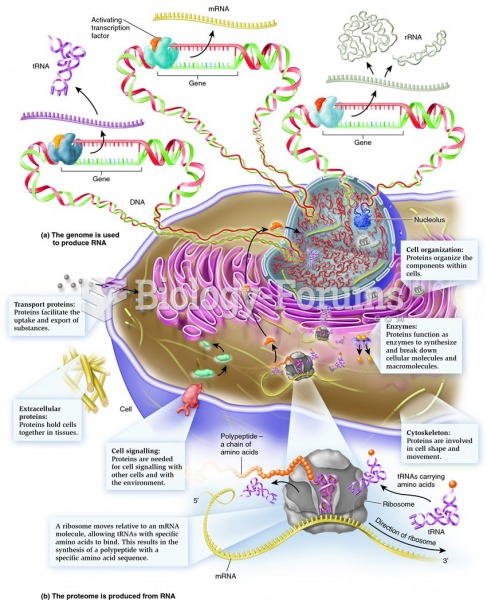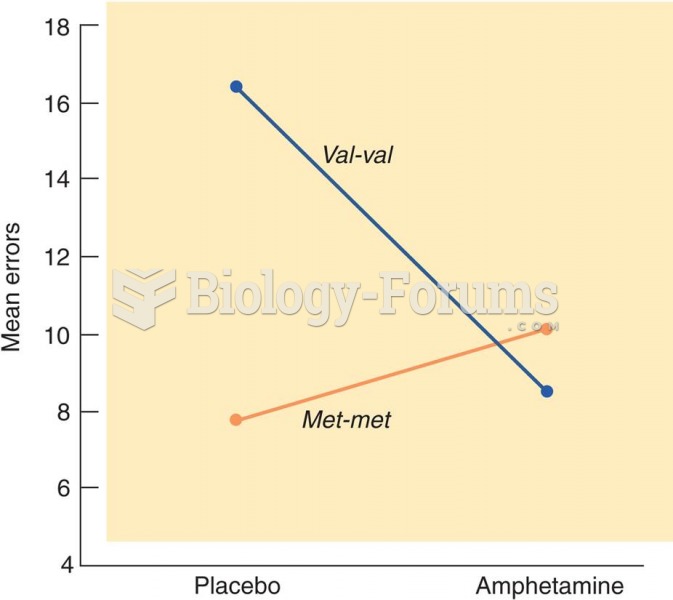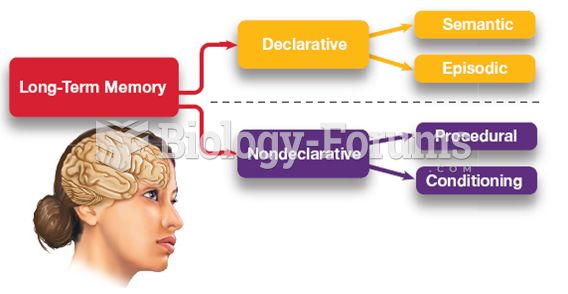|
|
|
Cytomegalovirus affects nearly the same amount of newborns every year as Down syndrome.
On average, the stomach produces 2 L of hydrochloric acid per day.
Drying your hands with a paper towel will reduce the bacterial count on your hands by 45–60%.
Though Candida and Aspergillus species are the most common fungal pathogens causing invasive fungal disease in the immunocompromised, infections due to previously uncommon hyaline and dematiaceous filamentous fungi are occurring more often today. Rare fungal infections, once accurately diagnosed, may require surgical debridement, immunotherapy, and newer antifungals used singly or in combination with older antifungals, on a case-by-case basis.
The most common treatment options for addiction include psychotherapy, support groups, and individual counseling.







